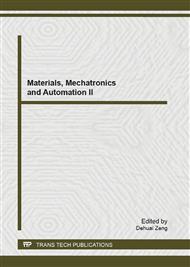p.787
p.793
p.799
p.805
p.809
p.817
p.823
p.830
p.836
Numerical Study on Film Cooling Effectiveness from Converging Slot-Hole
Abstract:
Film cooling effectiveness downstream and spanwise distribution of one row of converging slot-holes at the blade were investigated using a three-dimensional finite volume method and multi-block technique at the blowing ratio ranging from 0.5 to 2.0. Previous successful application of a two-layer turbulence model to cylindrical is extended to predict film cooling for the converging slot-hole geometry. Also, the influence of jet angle on film cooling effectiveness from converging slot-holes at the blade was studied. The results showed that the centerline effectiveness of converging slot-hole was going to be increased along with blowing ratio increasing. It was also shown that the uniform lateral spreading of the effectiveness with an enhancement of the intersection of the two slot-holes. It was found that cooling effectiveness for 25° was superior to other jet angle for any blowing ratios. Furthermore, the improvement realized by the small jet angle compared to the other jet angle holes was more important at the higher blowing ratio than it was at the lower one. Cooling effectiveness of 45° and 60° holes was declining along downstream of the holes, but it was improving over again at somewhere from downstream and then it was continuing decline. Cooling effectiveness of 60° holes presented a marked improvement compared to 45° holes at beyond downstream of the holes. Counter rotating vortex pairs at the exit of big jet angle holes were obvious and strong, but these vortexes have been weakened at the exit of small jet angle holes and results in a better coolant protection than that of the big jet angle holes.
Info:
Periodical:
Pages:
836-841
Citation:
Online since:
August 2013
Authors:
Price:
Сopyright:
© 2013 Trans Tech Publications Ltd. All Rights Reserved
Share:
Citation:


